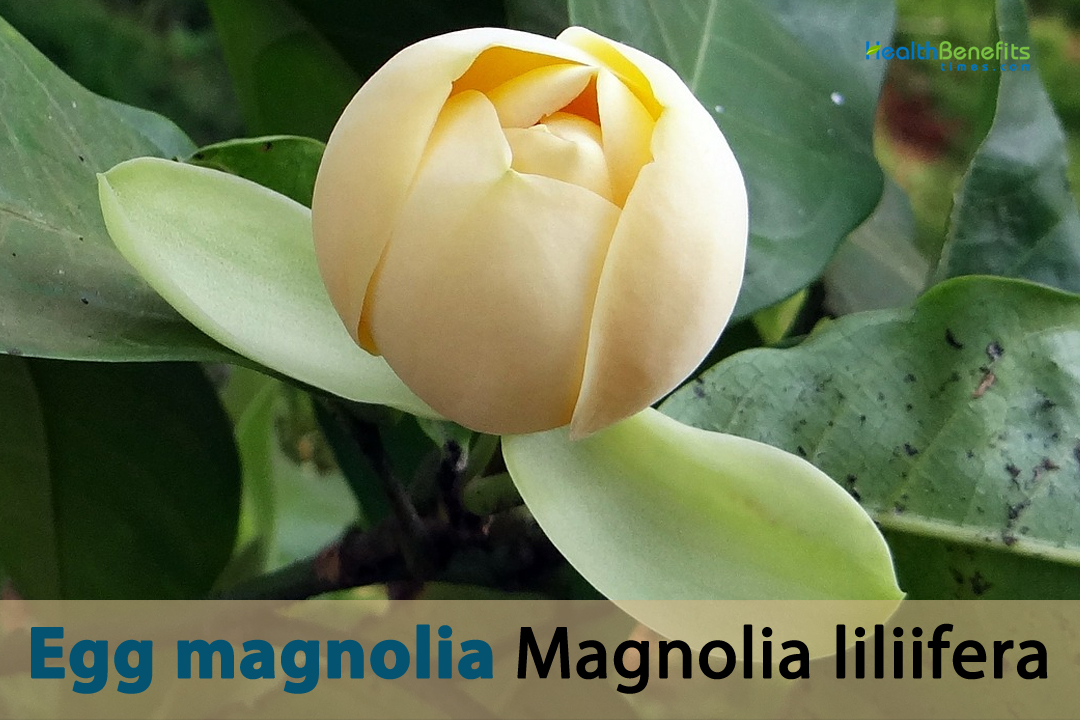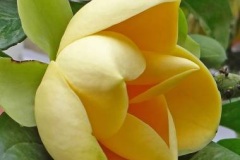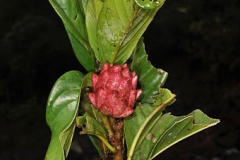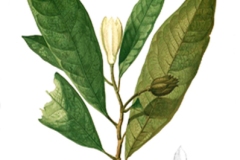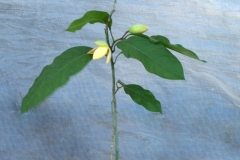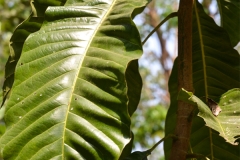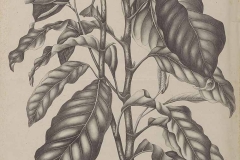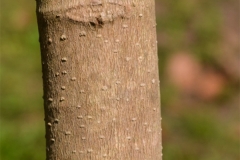| Egg magnolia Quick Facts | |
|---|---|
| Name: | Egg magnolia |
| Scientific Name: | Magnolia liliifera |
| Origin | Southeastern regions of Asia |
| Colors | Greenish–white to pink colored |
| Shapes | Woody, cone-shaped fruit about 7-10 cm long and 4-5 cm in diameter |
| Health benefits | Promotes weight loss, prevent allergic reactions, Solves respiratory problems, Reduces menstrual cramps, Improves dental hygiene, Improves mental health |
| Name | Egg magnolia |
|---|---|
| Scientific Name | Magnolia liliifera |
| Native | Southeastern regions of Asia. It is found in the Indochinese peninsula in Thailand, Vietnam, Myanmar, New Guinea, Cambodia and Laos, Sulawesi, Sumatera, Indonesia, Philippines, China and also Japan. In China it is found in the provinces of Anhui, Fujian, Guangdong, Guangxi, Guizhou, Hubei, Hunan, Jiangsu, Jiangxi, Shaanxi, Sichuan, Yunnan, and Zhejiang |
| Common Names | Egg Magnolia, Magnolita, yellow magnolia, Bigleaf Magnolia, Evergreen Magnolia, Mulan magnolia, Purple magnolia, Red magnolia, Lily magnolia, Tulip magnolia, Jane magnolia, Woody-orchid |
| Name in Other Languages | Assamese: Jauri-champa Bengali: Jahuricām̐pā (জহুরিচাঁপা) Borneo: Cempaca, Cempaca telur, Megar, Tala umah, Talauma, Talahuma Central Khmer: Montear (មន្ទារ) Chinese: Gài liè mù (盖裂木) English: Egg Magnolia, Lily Magnolia, talauma Finnish: Liljamagnolia Hindi: Him Champ (हिम चम्पा) Indonesia: Cempaka telur Kannada: Motte sampige (ಮೊಟ್ಟೆಸಂಪಿಗೆ) Manipuri: Oothambal hangampal (ꯎꯊꯝꯕꯥꯜ ꯍꯉꯥꯝꯄꯥꯜ), Oothambal (ঊথম্বাল) Marathi: Kavti chafa Thai: Montha (มณฑา) |
| Plant Growth Habit | Slow-growing, magnificent, ornamental, small to medium-sized deciduous shrub or small tree |
| Growing Climates | Grows in forests, thickets, and on hillsides |
| Soil | Grows best in moist, well-drained soil mix with rich nutrients. The soil should also be slightly acidic to help with its growth |
| Plant Size | About 12 to 60 feet (3.5 to 18.5 m) tall with bole diameter around 30 cm |
| Bark | Bark is dark gray, smooth, and with vertical lines |
| Leaf | Alternate, simple, ovate, and 10-20 cm long and 6-12 cm wide. They are dark green and glossy on the upper surface, while the lower surface is covered with brownish hairs |
| Flowering season | March, April, May |
| Flower | Produces solitary, light greenish yellow cup-shaped blossoms have a diameter of 10 to 15 centimeters |
| Fruit Shape & Size | Woody, cone-shaped fruit about 7-10 cm long and 4-5 cm in diameter |
| Fruit Color | Greenish–white to pink colored |
| Seed | Brilliant red colored seeds |
| Flavor/Aroma | Wafting pineapple-like scent |
| Plant Parts Used | Whole plants, bark and flowers |
| Propagation | By seed, grafting or by cuttings |
| Season | August through October |
| Varieties |
|
| Health benefits |
|
Plant Description
Egg magnolia is a magnificent, ornamental, small to medium-sized deciduous shrub or small tree that develops slowly but is magnificent and ornamental. Typically, it reaches a height of 12 to 60 feet (3.5 to 18.5 m) and has bole diameters of around 30 cm. It has numerous stems, is spherical, and spreads. The plant is indigenous to upland vegetation, forests, and thickets. The plant thrives in a nutrient-rich, moist, well-drained soil mixture. Additionally, the soil ought to be marginally acidic to promote growth. Egg magnolia is a widely utilized ornamental plant in parks and gardens. Additionally, it is employed as a botanical remedy for a range of conditions, including fever, headache, and stomach discomfort. Egg magnolia is highly valued for its voluminous, fragrant, and ostentatious blossoms that occur prior to the emergence of the foliage in early spring.
Buds resemble eggs prior to opening, hence the prevalent name. One of Asia’s most valuable aromatic ornamental trees. A fragrant flower of this small tree or shrub that is highly valued resembles the flower of the Dwarf Magnolia, but its fragrance is considerably stronger. Egg Magnolia and Dwarf Magnolia are distinguished by their egg-shaped blossom buds; however, the flowers of Dwarf Magnolia are white. Medium in stature, egg magnolia is characterized by its velvety bark and fragrant sapwood.
Leaves
The alternate, simple, narrowly obovate leaves have an obtuse apex and a tapering base; they reach dimensions of 20–50 cm in length and 7.5–15 cm in width. They are smooth or have dispersed filaments along the mid vein abaxially. There are 9–15 pairs of widely spaced side veins on the leaves. The upper surface is lustrous and dark green, whereas the lower surface is covered in brownish hairs. With a distended base, the petiole measures 5-7 cm in length, whereas the stipule scar is shorter than 3/4 the length of the petiole.
Flowers
The solitary, cup-shaped blossoms have a diameter of 10 to 15 centimeters. They are produced in early spring, prior to the emergence of the foliage, on bare branches. The base of the creamy-white petals has a hint of pinkish-purple. Their arrangement consists of two whorls, each containing six to nine petals. The flowers emit a delicate, sweet fragrance that is discernible from a considerable distance.
Fruits
The fruit is a 7-10 cm long, 4-5 cm in diameter, woody, cone-shaped structure that contains numerous brilliant red seeds. The fruits’ seeds have sarcotesta, which are fleshy seed coats ranging in color from pink to orange-brown. Sarcotesta are a form of testa found on plants. The planting season is August through October.
Caring Egg magnolia
Egg magnolia is a relatively resilient plant that does not demand excessive care. It thrives in frigid environments and can withstand frost. However, it requires particular light and soil conditions in order to flourish and produce an abundance of flowers.
Soil
Egg magnolia prefers relatively moist soil. It is not resistant to drought or inundation, so it must be watered only slightly. A nutrient-rich, well-drained soil mixture is optimal for the Egg magnolia plant. Additionally, the soil ought to be marginally acidic to promote growth.
Sunlight
Egg magnolia thrives in direct sunlight. It produces more beautiful flowers and thrives in direct sunlight. Although it can tolerate shade, its flowering will be considerably reduced and its growth rate will be considerably slowed.
Water
Magnolia in watering eggs is relatively straightforward. Due to the plant’s preference for saturated soil, daily watering is required. Prolonged dryness of the topsoil should be avoided. Establish them in the soil to facilitate the drainage of excess water. The most effective method of watering Egg magnolia is at the roots.
Prune
After the flowering season, light pruning is beneficial for preserving the desirable form and promoting new growth. Dead or diseased branches should be removed to promote optimal plant health.
Fertilize
Throughout the growing season, apply a well-balanced fertilizer to your Egg magnolia to promote flowering and overall plant vitality.
Varieties
Several botanists, including Hans Peter Nooteboom and Richard B. Figlar, have reclassified the previously designated varieties of egg magnolia as distinct species, according to data compiled by Rafaël Govaerts, a researcher affiliated with the WCSP at Kew Gardens.
- Magnolia angatensis Blanco
- Magnolia beccarii (Ridl.) ined.
- Magnolia championii Benth.
- Magnolia hodgsonii (Hook.f. & Thom.)
- Magnolia singapurensis (Ridl.) H.Keng
Health benefits of Egg magnolia
As an aesthetically pleasing tree, egg magnolia is among the most desirable ornamental plants for a garden. The fragrant purple blossoms are certain to attract considerable interest and garner commendation from your neighbors. Furthermore, the plant possesses an abundance of medicinal properties that offer advantageous health effects. The inclusion of these plants in your garden is unquestionably a wise decision given their health benefits.
1. Improves mental health
The anxiolytic properties of egg magnolia may contribute to the maintenance of hormonal equilibrium within the body. Anxiety and panic-inducing stress hormones are diminished and stabilized. It reduces the body’s hormone secretion and exerts an effect on the endocrine system. Dopamine, which is also released, may potentially aid in the treatment of depression and other mental disorders.
2. Improves dental hygiene
Recent research has demonstrated that extracts derived from Egg magnolia may have potential as dental remedies. It can reduce inflammation and hemorrhaging of the gums and alleviate gingivitis.
3. Reduces menstrual cramps
Egg magnolia extracts possess remarkable anti-inflammatory qualities that alleviate muscular tension. This property of the plant has the potential to alleviate menstrual pains.
4. Solves respiratory problems
Magnolia extract was utilized medicinally in ancient China. It was utilized in the formulation of medications for asthma and respiratory conditions such as bronchitis and wheezing.
5. Anti-allergenic properties
Additionally, magnolia is purported to mitigate severe symptoms and prevent allergic reactions. Additionally, its anti-inflammatory properties alleviate allergic reactions. Using magnolia supplements to treat hay fever, seasonal allergies, or specific allergen sensitivity is possible.
6. Promotes weight loss
Magnolia supplements have frequently been found to suppress appetite, which can facilitate weight loss. Weight loss supplements containing magnolia extracts are extraordinarily effective because they inhibit excess and facilitate adherence to a strict diet.
Different Facts
- In numerous regions across the globe, Magnolia liliifera is extensively cultivated as an ornamental tree.
- Its magnificent and aromatic flowers render it a favored selection for landscaping, parks, and gardens.
- The bark and flower blossoms are utilized in traditional Chinese medicine to treat asthma, coughs, and other respiratory issues.
- Additionally, fever, diarrhea, and dysentery can be treated with the bark.
- The egg magnolia is prized for its fragrant, egg-shaped flower that emits a morning fragrance reminiscent of pineapple.
- Herbal remedies comprise of tree parts are employed to treat ailments such as inflammation, anxiety, and digestive disorders.
Different Uses
- Ornamental Use: Egg magnolia is esteemed for the aesthetic qualities it possesses. It is a popular choice for specimen trees in landscapes, gardens, and parks due to the striking tulip-shaped blossoms it produces, which emit a pleasant fragrance. Additionally, the tree’s compact stature and aesthetically pleasing foliage enhance its ornamental allure.
- Aromatic Oil: An essential oil derived from the blossoms of Egg magnolia holds significant value within the fields of aromatherapy and perfumery. As a result of its fragrance and prospective skin benefits, this oil is utilized in numerous cosmetic and therapeutic products, where it is believed to have soothing properties.
- Cultural Significance: Certain geographical areas attribute cultural significance to egg magnolia, which is linked to particular customs and symbolic meanings. The flowers can symbolize virtues such as purity, attractiveness, and the advent of spring.
- Wildlife Habitat: Local wildlife can benefit from the planting of Egg magnolia, which provides shelter and sustenance for birds, bees, and other pollinators. Its flowers contribute to the pollination of neighboring plants and the overall health of the ecosystem by being especially appealing to pollinators.
- Timber: While egg magnolia’s wood is not as frequently employed for construction purposes as that of other magnolia species, it can still be utilized in craft and light construction endeavors. The wood is valued for its workability and texture.
- Educational Use: Educational institutions and botanical gardens may cultivate Egg magnolia for scientific, conservation, and educational purposes. The institution provides an opportunity for both visitors and students to gain knowledge regarding plant diversity, conservation initiatives, and the unique attributes of magnolias.
References:
https://en.wikipedia.org/wiki/Magnolia_liliifera
https://indiabiodiversity.org/species/show/230358
https://en.hortipedia.com/Magnolia_liliifera
https://www.flowersofindia.net/catalog/slides/Egg%20Magnolia.html
https://asianplant.net/Magnoliaceae/Magnolia_liliifera.htm
https://gd.eppo.int/taxon/MAGLF


